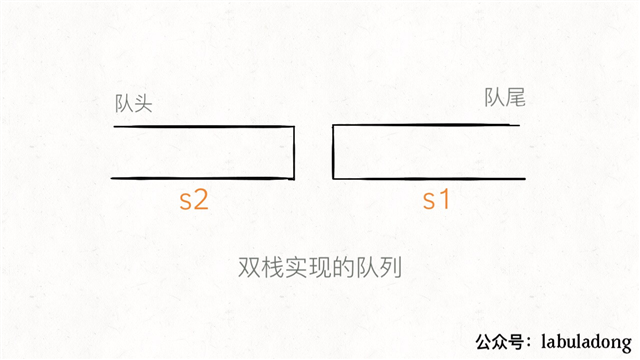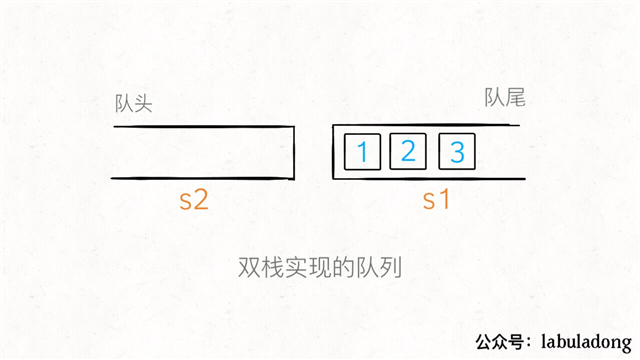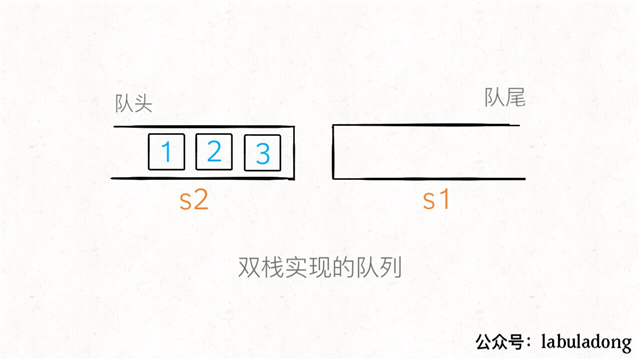请你仅使用两个栈实现先入先出队列。队列应当支持一般队列支持的所有操作(push、pop、peek、empty):
实现 MyQueue 类:
void push(int x) 将元素 x 推到队列的末尾
int pop() 从队列的开头移除并返回元素
int peek() 返回队列开头的元素
boolean empty() 如果队列为空,返回 true ;否则,返回 false
说明:
你只能使用标准的栈操作 —— 也就是只有 push to top, peek/pop from top, size, 和 is empty 操作是合法的。
你所使用的语言也许不支持栈。你可以使用 list 或者 deque(双端队列)来模拟一个栈,只要是标准的栈操作即可。



1 class MyQueue { 2 private: 3 stack<int> s1; 4 stack<int> s2; 5 public: 6 /** Initialize your data structure here. */ 7 MyQueue() { 8 9 } 10 11 /** Push element x to the back of queue. */ 12 void push(int x) { 13 s2.push(x); 14 } 15 16 /** Removes the element from in front of queue and returns that element. */ 17 int pop() { 18 int v = peek(); 19 s1.pop(); 20 return v; 21 } 22 23 /** Get the front element. */ 24 int peek() { 25 if(s1.empty()) { 26 while(!s2.empty()) { 27 s1.push(s2.top()); 28 s2.pop(); 29 } 30 } 31 return s1.top(); 32 } 33 34 /** Returns whether the queue is empty. */ 35 bool empty() { 36 return s1.empty() && s2.empty(); 37 } 38 }; 39 40 /** 41 * Your MyQueue object will be instantiated and called as such: 42 * MyQueue* obj = new MyQueue(); 43 * obj->push(x); 44 * int param_2 = obj->pop(); 45 * int param_3 = obj->peek(); 46 * bool param_4 = obj->empty(); 47 */
232. Implement Queue using Stacks(队列实现栈)
原文:https://www.cnblogs.com/zle1992/p/14825224.html